
|
ParaMonte MATLAB 3.0.0
Parallel Monte Carlo and Machine Learning Library
See the latest version documentation. |

|
ParaMonte MATLAB 3.0.0
Parallel Monte Carlo and Machine Learning Library
See the latest version documentation. |
This is the base class for generating objects containing information about autocorrelation of the input data and tools for visualizing it.
More...

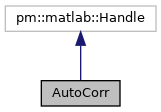
Public Member Functions | |
| function | AutoCorr (in dfref, in numlag, in numstd) |
| Return an object of class pm.stats.AutoCorr. This is the constructor of the pm.stats.AutoCorr class. More... | |
| function | get (in self, in dfref, in numlag, in numstd) |
Return the autocorrelation of the input data from a lag of 0 to numlag.More... | |
| function | setvis (in self, in val) |
| Set up the visualization tools of the autocorrelation. More... | |
Data Fields | |
| Property | dfref |
| Property | numlag |
| Property | numstd |
| Property | bnd |
| Property | val |
| Property | vis |
This is the base class for generating objects containing information about autocorrelation of the input data and tools for visualizing it.
table format.
Final Remarks ⛓
If you believe this algorithm or its documentation can be improved, we appreciate your contribution and help to edit this page's documentation and source file on GitHub.
For details on the naming abbreviations, see this page.
For details on the naming conventions, see this page.
This software is distributed under the MIT license with additional terms outlined below.
This software is available to the public under a highly permissive license.
Help us justify its continued development and maintenance by acknowledging its benefit to society, distributing it, and contributing to it.
Definition at line 24 of file AutoCorr.m.
| function AutoCorr::AutoCorr | ( | in | dfref, |
| in | numlag, | ||
| in | numstd | ||
| ) |
Return an object of class pm.stats.AutoCorr.
This is the constructor of the pm.stats.AutoCorr class.
| [in] | dfref | : The input MATLAB matrix or table of rank 2 containing the data as ncol columns of nrow observations whose autocorrelation must be computed.Ideally, the user would want to pass a reference to a dataframe (e.g., as a function handle @()df) so that the data remains dynamically up-to-date.(optional. If missing, the autocorrelation will not be computed.) |
| [in] | numlag | : The input scalar MATLAB positive whole number representing the number of lags for which the autocorrelation must be computed. This argument is directly passed to the corresponding argument of the MATLAB intrinsic autocorr() in the MATLAB Econometrics Toolbox. |
| [in] | numstd | : The input positive scalar MATLAB double representing the number of standard deviations to be used in computing the lower and upper significance levels of the autocorrelation. This argument is directly passed to the corresponding argument of the MATLAB intrinsic autocorr() in the MATLAB Econometrics Toolbox.(optional, default = 1) |
self : The output object of class pm.stats.AutoCorr.
Possible calling interfaces ⛓
Example usage ⛓
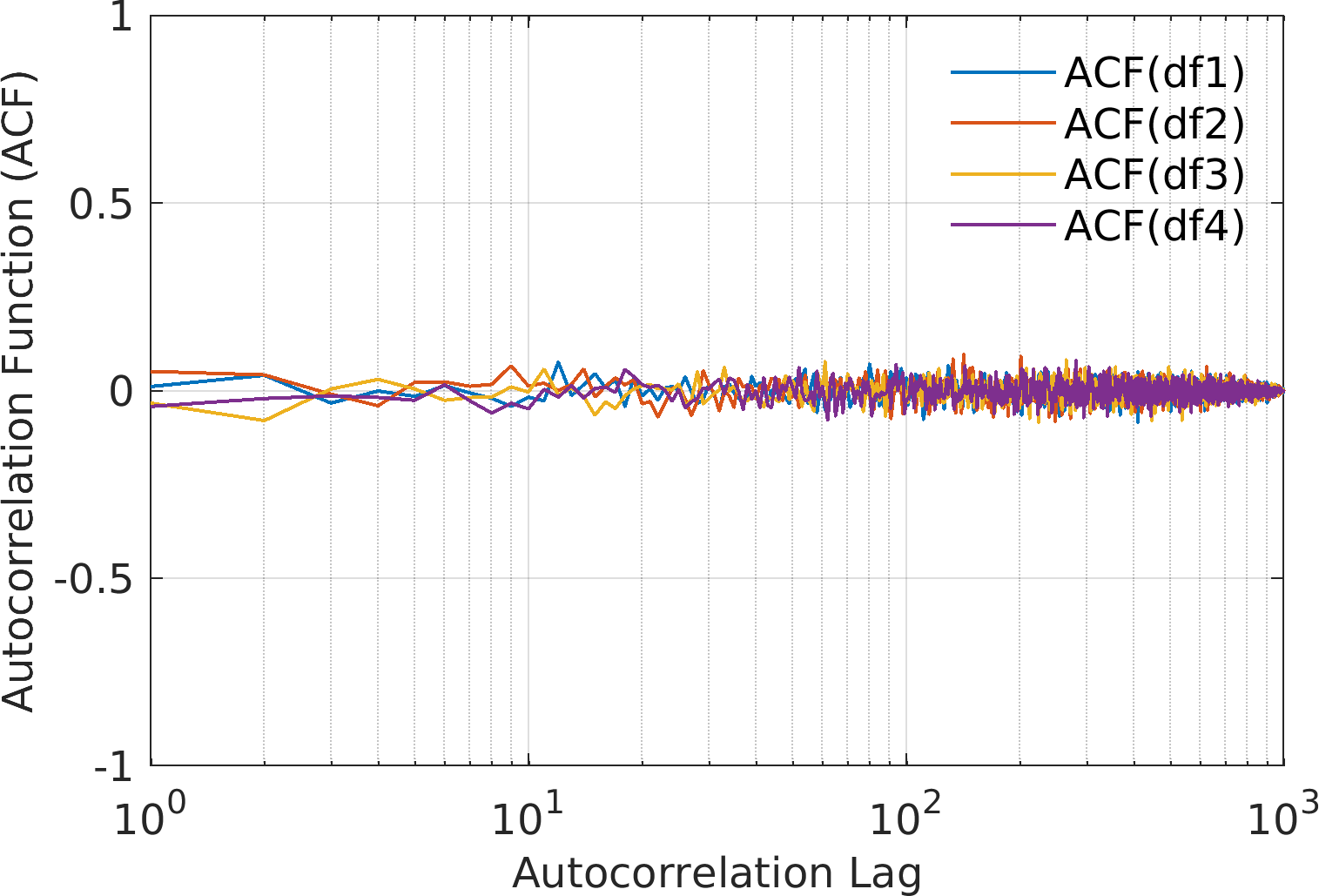
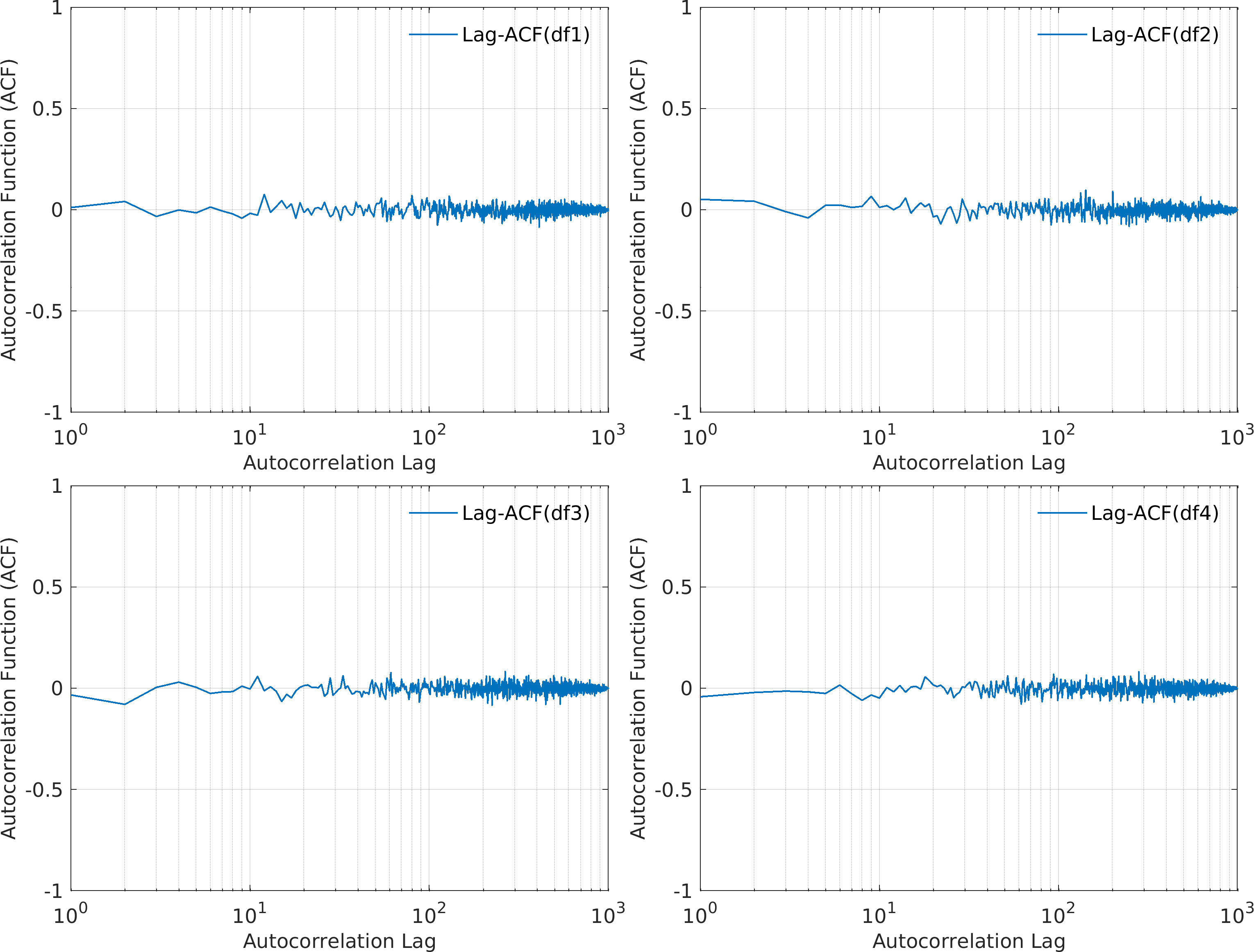
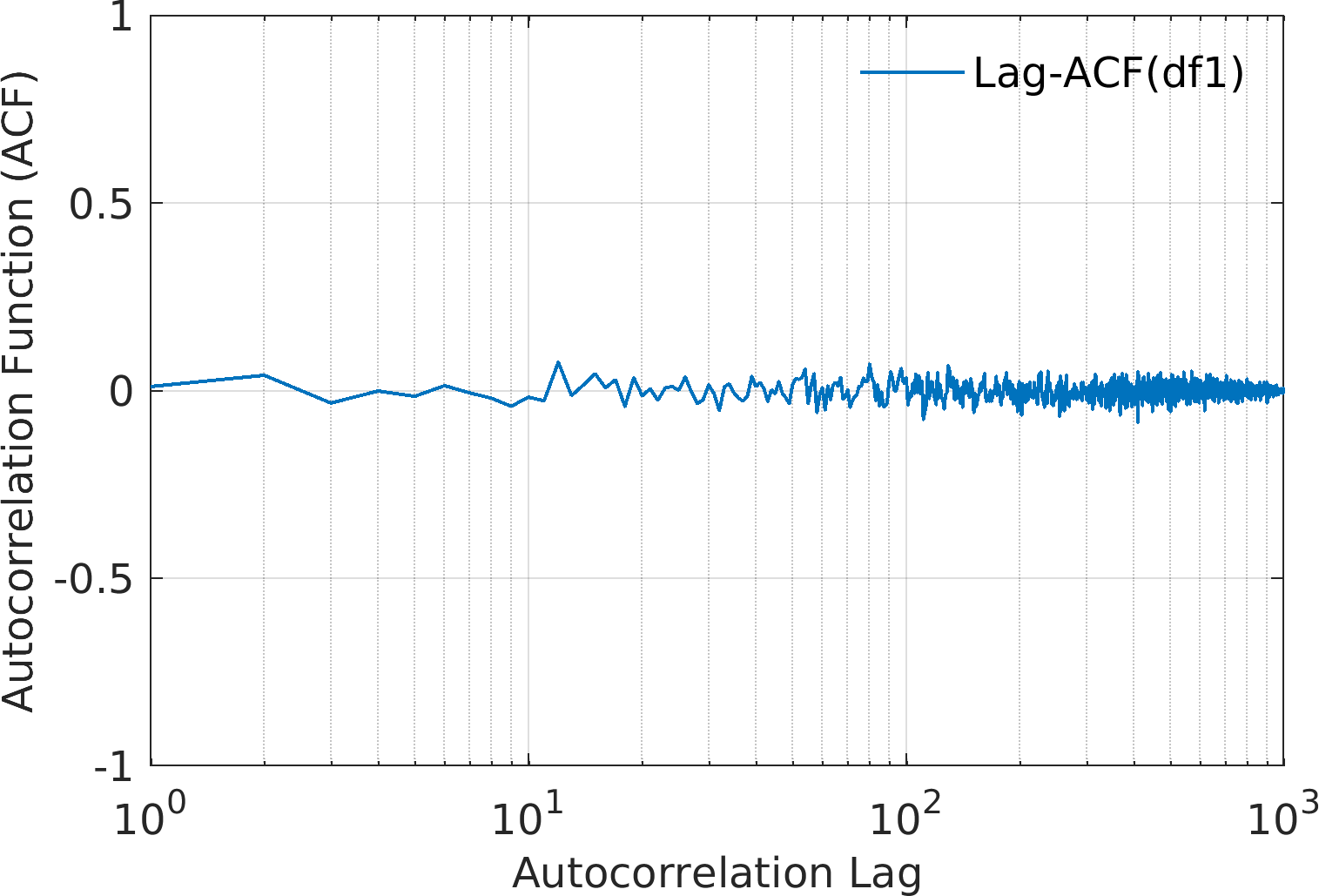
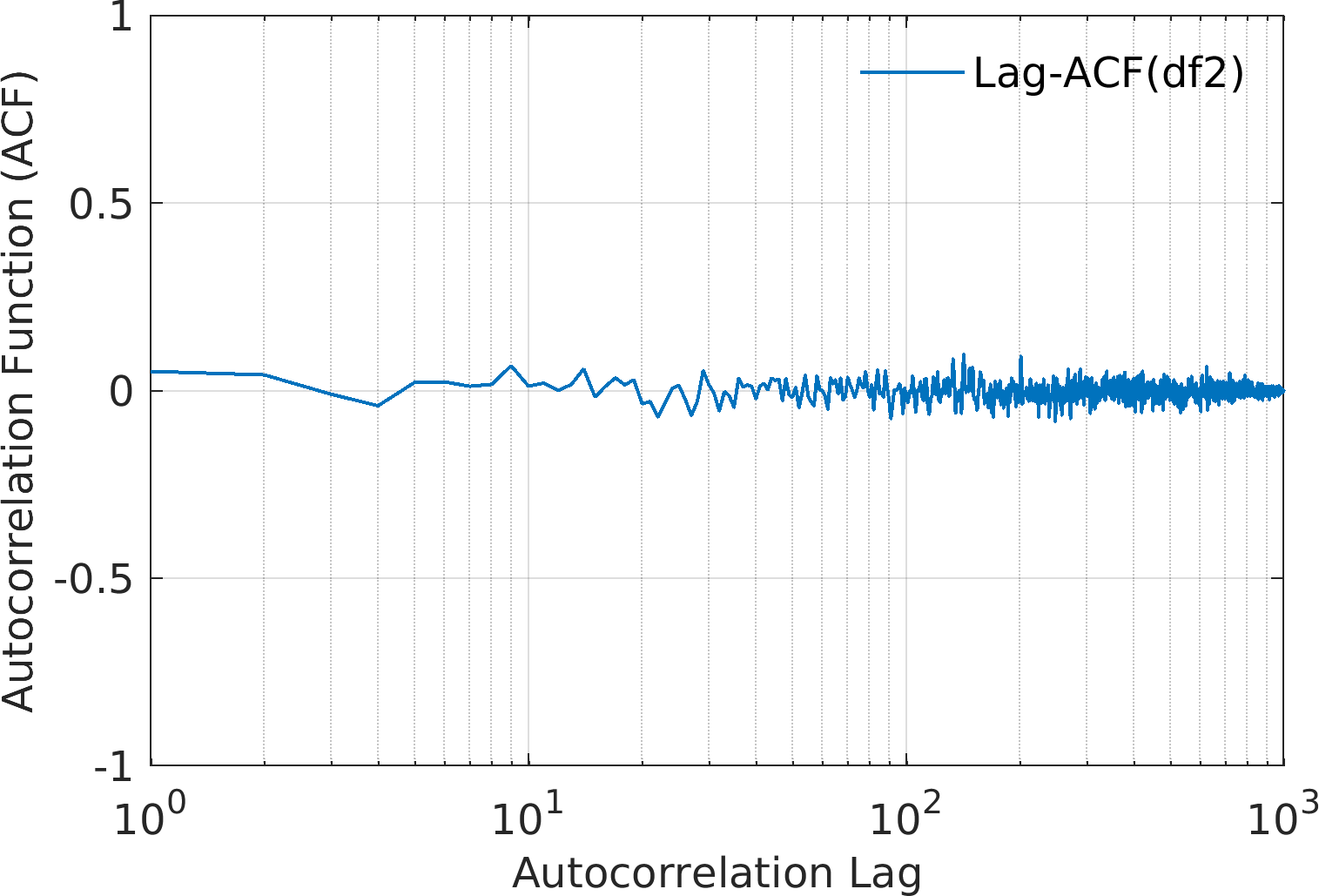
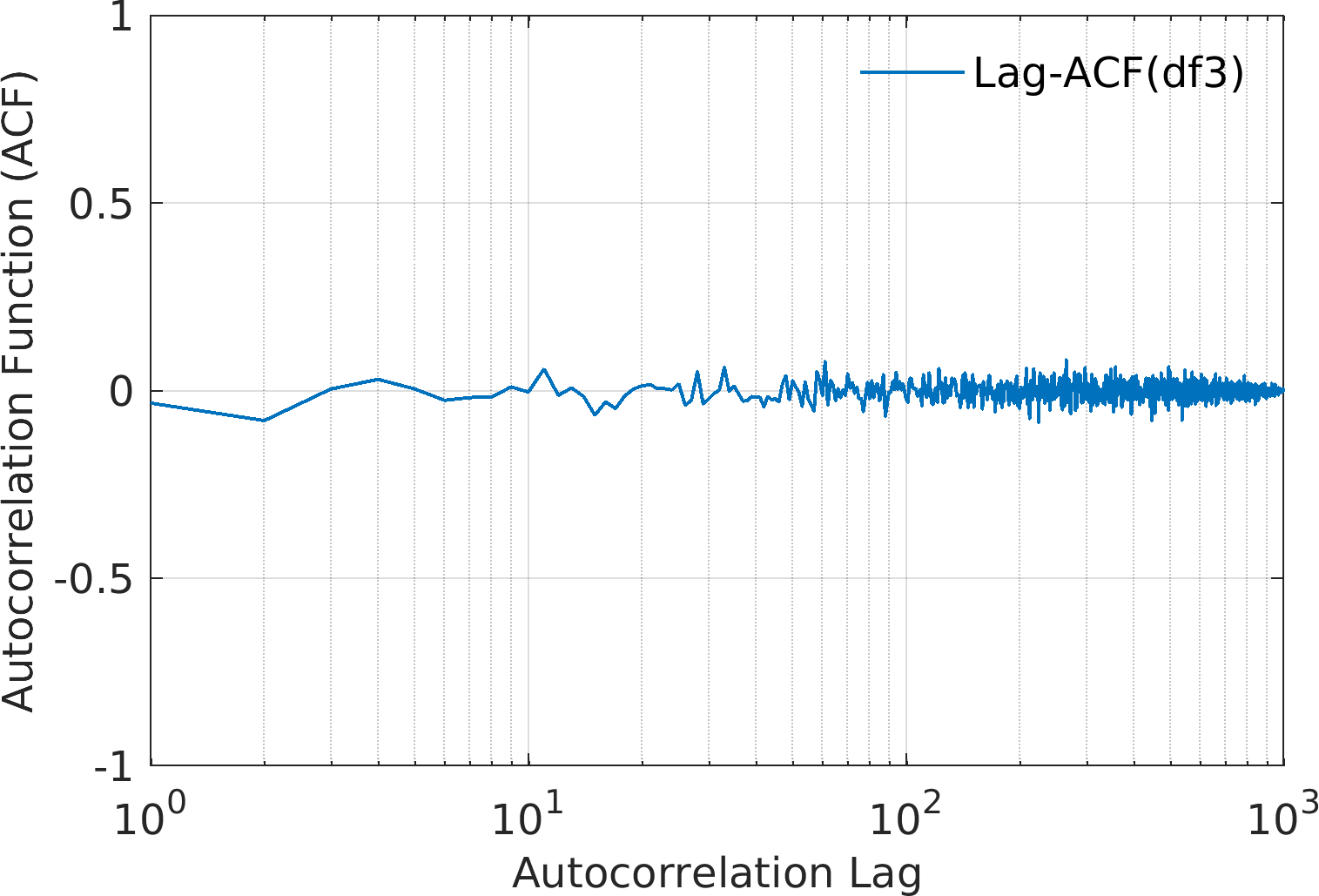

Final Remarks ⛓
If you believe this algorithm or its documentation can be improved, we appreciate your contribution and help to edit this page's documentation and source file on GitHub.
For details on the naming abbreviations, see this page.
For details on the naming conventions, see this page.
This software is distributed under the MIT license with additional terms outlined below.
This software is available to the public under a highly permissive license.
Help us justify its continued development and maintenance by acknowledging its benefit to society, distributing it, and contributing to it.
| function AutoCorr::get | ( | in | self, |
| in | dfref, | ||
| in | numlag, | ||
| in | numstd | ||
| ) |
Return the autocorrelation of the input data from a lag of 0 to numlag.
This is a dynamic method of the pm.stats.AutoCorr class.
This method automatically stores any input information in the corresponding components of the parent object.
However, any components of the parent object corresponding to the output of this method must be set explicitly manually.
| [in,out] | self | : The input/output parent object of class pm.stats.AutoCorr which is implicitly passed to this dynamic method (not by the user). |
| [in] | dfref | : The input MATLAB matrix or table of rank 2 containing the data as ncol columns of nrow observations whose autocorrelation must be computed.Ideally, the user would want to pass a reference to a dataframe (e.g., as a function handle @()df) so that the data remains dynamically up-to-date.(optional. If missing, the contents of the corresponding internal component of the parent object will be used.) |
| [in] | numlag | : The input positive scalar MATLAB integer representing the number of lags to be used in computing the autocorrelation. The default value will be used if the input numlag is unspecified or empty [].(optional, default = size(dfref.copy(), 1) - 1) |
| [in] | numstd | : The input positive scalar MATLAB double representing the number of standard deviations to be used in computing the lower and upper significance levels of the autocorrelation. This argument is directly passed to the corresponding argument of the MATLAB intrinsic autocorr() in the MATLAB Econometrics Toolbox.The default value will be used if the input numstd is empty [].(optional, default = 1) |
val : The output MATLAB table of size numlag + 1 containing the autocorrelation from lag 0 to numlag.val always contains the set of numlag + 1 autocorrelation lags from 0 to numlag.bnd : The output MATLAB table of size(dfref.copy(), 2) rows by one column containing the absolute numstd-significance level of the computed autocorrelations. Any autocorrelation value whose magnitude is smaller than the corresponding bnd element can be considered insignificant and mere fluctuation.
Possible calling interfaces ⛓
Final Remarks ⛓
If you believe this algorithm or its documentation can be improved, we appreciate your contribution and help to edit this page's documentation and source file on GitHub.
For details on the naming abbreviations, see this page.
For details on the naming conventions, see this page.
This software is distributed under the MIT license with additional terms outlined below.
This software is available to the public under a highly permissive license.
Help us justify its continued development and maintenance by acknowledging its benefit to society, distributing it, and contributing to it.
| function AutoCorr::setvis | ( | in | self, |
| in | val | ||
| ) |
Set up the visualization tools of the autocorrelation.
This is a dynamic Hidden method of the pm.stats.AutoCorr class.
This method is inaccessible to the end users of the ParaMonte MATLAB library.
| [in,out] | self | : The implicitly-passed input argument representing the parent object of the method. |
| [in] | val | : The input (reference to a function handle returning a) MATLAB matrix or table of rank 2 containing the computed autocorrelation to be visualized.Ideally, the user would want to pass a reference to a dataframe (e.g., as a function handle @()df) so that the data remains dynamically up-to-date.(optional. If missing, the contents of the corresponding var attribute of the parent object will be used.) |
Possible calling interfaces ⛓
Final Remarks ⛓
If you believe this algorithm or its documentation can be improved, we appreciate your contribution and help to edit this page's documentation and source file on GitHub.
For details on the naming abbreviations, see this page.
For details on the naming conventions, see this page.
This software is distributed under the MIT license with additional terms outlined below.
This software is available to the public under a highly permissive license.
Help us justify its continued development and maintenance by acknowledging its benefit to society, distributing it, and contributing to it.
| Property AutoCorr::bnd |
bnd
The MATLAB table of rank 2 serving as a convenient storage component each column of which corresponds to the absolute numstd-significance bound for the corresponding computed autocorrelations of the input data (that is optionally stored in the val component of the parent object).
The values represent the numstd-sigma standard errors on the computed autocorrelations.
Any autocorrelation value bound within these limits can be considered random fluctuations at numstd-sigma confidence level.
This component is automatically populated when constructing an object of class pm.stats.AutoCorr.
It must be populated manually at all other times.
Definition at line 77 of file AutoCorr.m.
| Property AutoCorr::dfref |
dfref
A scalar object of class pm.container.DataFrame containing (a refernece to) the user-specified data whose covariance must be computed.
Definition at line 38 of file AutoCorr.m.
| Property AutoCorr::numlag |
numlag
The positive scalar MATLAB whole number representing the number of lags for which the autocorrelation must be computed.
This argument is directly passed to the corresponding argument of the MATLAB intrinsic autocorr() in the MATLAB Econometrics Toolbox.
Definition at line 48 of file AutoCorr.m.
| Property AutoCorr::numstd |
numstd
The positive scalar MATLAB double representing the number of standard deviations to be used in computing the lower and upper significance levels of the autocorrelation.
This argument is directly passed to the corresponding argument of the MATLAB intrinsic autocorr() in the MATLAB Econometrics Toolbox.
Definition at line 59 of file AutoCorr.m.
| Property AutoCorr::val |
val
The MATLAB table of rank 2 serving as a convenient storage component for the autocorrelation.
This component is automatically populated when constructing an object of class pm.stats.AutoCorr.
It must be populated manually at all other times.
val always contains the set of lags for which the autocorrelation is computed.Definition at line 92 of file AutoCorr.m.
| Property AutoCorr::vis |
vis
The scalar MATLAB struct containing the set of predefined visualizations for the output data.
Definition at line 100 of file AutoCorr.m.